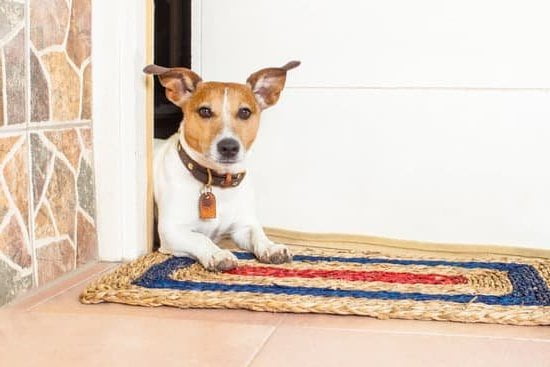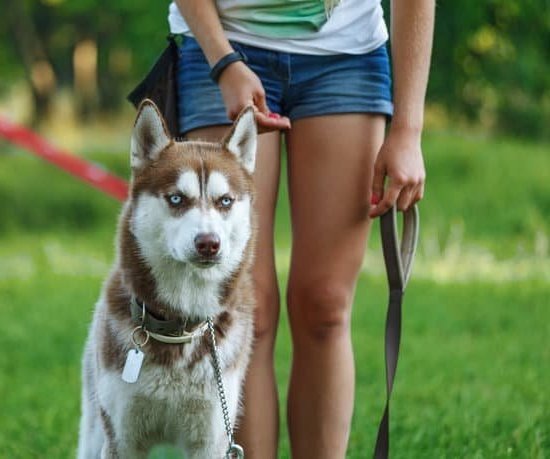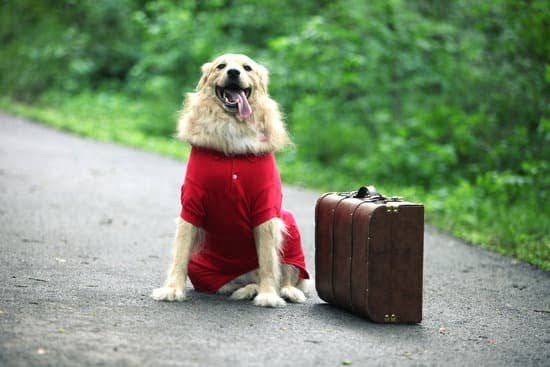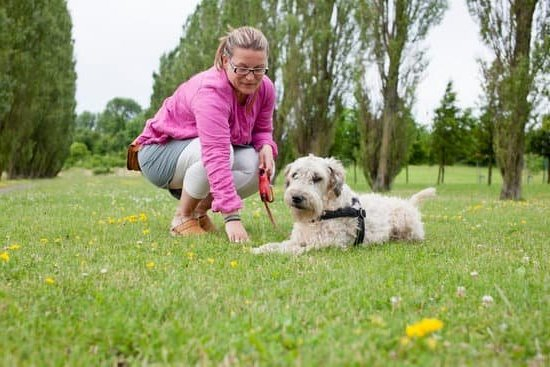When do dogs get potty trained? Potty training is an essential part of owning a dog, but knowing when to start the process can often be confusing for pet owners.
In this article, we will explore the ins and outs of potty training for dogs, including the basics, puppy age and development, signs that your dog is ready for training, tips for success, common mistakes to avoid, and how to handle setbacks. By the end of this article, you will have a better understanding of the potty training process for dogs and feel more confident in embarking on this important journey with your furry friend.
Potty training is a crucial aspect of dog ownership, as it sets the foundation for good behavior and a strong bond between you and your pet. Understanding what potty training involves and why it’s important is the first step in ensuring success. We will delve into the basics of potty training for dogs and discuss its significance in promoting a healthy relationship between you and your canine companion.
One of the key factors in determining when to start potty training is understanding puppy age and development. Knowing when your puppy is ready to begin training is essential in setting realistic expectations and ensuring successful results. We will explore this topic in detail to provide you with insight into when to initiate the potty training process with your dog.
Potty Training Basics
Potty training is a vital aspect of ensuring that your dog can live comfortably in your home. It involves teaching your dog where and when to go to the bathroom, which not only helps to keep your living space clean but also establishes good habits for your pet. It’s essential to understand that potty training is not just about preventing messes in the house, but also about promoting good hygiene for your dog.
What Potty Training Involves
Potty training typically involves teaching your dog to go to the bathroom outside or in a designated indoor area, such as a pee pad or litter box. This process involves establishing a routine for bathroom breaks, observing and rewarding positive behaviors, and correcting accidents as needed. Consistency and patience are key when it comes to potty training, as it may take some time for your dog to fully grasp the concept.
Importance of Potty Training
Potty training is important because it sets the foundation for good behavior and cleanliness in dogs. It helps prevent indoor accidents, reduces the risk of marking behaviors, and promotes better hygiene and sanitation within the home. Additionally, potty training facilitates better communication between you and your dog, as you both learn to recognize cues and signals related to bathroom needs. Ultimately, successful potty training leads to a happier and healthier living environment for both you and your pet.
Puppy Age and Development
Potty training is an essential part of a dog’s early development, and knowing when to start the process is crucial for success. When it comes to potty training puppies, age and development play a significant role in determining when to begin this process.
Early Development Stage
Puppies typically begin their potty training journey at around 12-16 weeks of age. At this stage, they have developed enough physically to control their bladder and bowel movements. It is important to keep in mind that small breed puppies may have a smaller bladder capacity and may need more frequent potty breaks compared to larger breeds.
Mental Readiness
Aside from physical development, mental readiness is also an important factor in determining when to start potty training. Puppies should show signs of understanding basic commands, such as sit and stay, before beginning the potty training process. This indicates that they are mentally prepared for learning new behaviors.
Individual Differences
It’s important to note that each puppy is different, and there is no one-size-fits-all approach when it comes to determining the right time to start potty training. Some puppies may show readiness for potty training at an earlier age, while others may take a little longer to reach this stage of development. As a pet owner, it’s essential to observe your puppy’s behavior and readiness cues before embarking on the potty training journey.
Understanding the developmental stages of puppies is crucial in determining when to start potty training. By being patient and observant, pet owners can ensure a smooth transition into the potty training process for their furry companions.
Signs That Your Dog Is Ready for Potty Training
Potty training a dog is a crucial step in making them a well-behaved and house-trained pet. However, it’s important to recognize the signs that indicate your dog is ready for potty training. One of the most significant signs is when your dog starts to show an understanding of their own bodily functions. This may include sniffing around or circling before they go to the bathroom, indicating that they are aware of their need to relieve themselves.
Another sign that your dog is ready for potty training is when they begin to show discomfort after soiling their living space. Dogs are naturally clean animals and if they start to whine or bark after eliminating in their sleeping area, it could mean that they are ready to be trained on where it’s appropriate to do their business.
Additionally, if you notice that your dog can hold their bladder for longer periods or has fewer accidents indoors, this can also be an indicator that they are ready for potty training. It means that they are developing better bladder control and understanding when and where they should go potty.
It’s important not to rush your dog into potty training before they show these signs, as it could lead to confusion and setbacks in the process. Being patient and observant of your dog’s behavior will help ensure a smoother and more successful potty training experience.
| Signs of Readiness for Potty Training | Description |
|---|---|
| Shows awareness of bodily functions | Sniffing, circling before going, etc. |
| Discomfort after soiling living space | Whining, barking after eliminating indoors |
| Better bladder control | Fewer accidents indoors, ability to hold bladder longer |
Tips for Successful Potty Training
Establishing a routine is crucial when potty training your dog. Consistency is key to success, so it’s important to take your dog outside at the same times every day, such as first thing in the morning, after meals, and before bedtime. This will help them understand when and where they should go potty. Dogs thrive on routine, so be patient and stick to the schedule even if it means some early mornings or late nights.
Using positive reinforcement is another important aspect of potty training. When your dog goes potty in the right place, be sure to praise them and offer a treat as a reward. Positive reinforcement helps your dog associate going potty outside with good things, making them more likely to repeat the behavior. Avoid scolding or punishing your dog for accidents indoors, as this can create fear or anxiety around potty training.
In addition to establishing a routine and using positive reinforcement, it’s also helpful to keep an eye on your dog’s behavior and body language. Some dogs may have specific behaviors or actions they exhibit before going potty, such as sniffing around or circling a particular spot. Being aware of these signs can help you anticipate when your dog needs to go outside and reduce the likelihood of accidents indoors.
| Tips for Successful Potty Training | Establishing a Routine and Using Positive Reinforcement |
|---|---|
| Consistency with potty schedule | Praise and reward for going potty outside |
| Importance of routine for dogs | Avoid punishment for accidents indoors |
| Monitoring behavior and body language | Awareness of signs indicating need to go outside |
Common Potty Training Mistakes to Avoid
Potty training a dog can be a challenging process, and avoiding common mistakes is crucial to ensure success. Here are some of the most common potty training mistakes to steer clear of:
- Waiting Too Long to Start Training: One of the most common mistakes dog owners make is waiting too long to start potty training. It’s important to begin the training process as early as possible, ideally when the puppy is between 12 and 16 weeks old. Waiting too long can make it more difficult to establish good habits and can lead to more accidents.
- Inconsistency in Routine: Dogs thrive on routine, so inconsistency can hinder the potty training process. It’s important to take your dog outside at the same times every day, such as first thing in the morning, after meals, and before bedtime. This consistency will help your dog understand when it’s time to go potty.
- Using Punishment: Punishing a dog for accidents or mistakes during potty training can actually do more harm than good. Instead of scolding or punishing your dog for accidents, focus on positive reinforcement when they go potty in the right place. Rewards, praise, and treats will encourage good behavior much more effectively.
Avoiding these common potty training mistakes will set you and your dog up for success. Remember that patience, consistency, and positive reinforcement are key elements of successful potty training.
Overall, keep in mind that every dog is different, so what works for one may not work for another. With patience and persistence, you’ll be able to guide your furry friend towards successful potty training habits.
Dealing With Setbacks
Potty training a dog can be a challenging process, and setbacks are bound to happen along the way. It’s important to handle accidents and keep the potty training on track to ensure success in the long run. Here are some tips for dealing with setbacks:
1. Stay Calm: It’s crucial to stay calm when your dog has an accident in the house. Yelling or punishing your dog will only create fear and anxiety, making it harder for them to understand and learn from the mistake.
2. Clean Thoroughly: When accidents happen, it’s essential to clean up thoroughly to remove any traces of odor that might attract your dog back to the same spot. Use a pet-friendly enzymatic cleaner to ensure that the area is properly cleaned.
3. Reassess the Routine: If you notice that accidents are happening frequently, it might be time to reassess your potty training routine. Make sure you are taking your dog outside regularly, especially after meals, playtime, and naps.
By following these tips, you can effectively handle setbacks and keep your dog’s potty training on track. Remember that consistency, patience, and positive reinforcement are key when it comes to successfully potty training your furry friend.
Conclusion
In conclusion, potty training a dog is an important process that requires patience, consistency, and positive reinforcement. Understanding the basics of potty training and recognizing the signs that your dog is ready are crucial in setting the foundation for success. It’s important to establish a routine and use positive reinforcement to encourage good behavior. Avoiding common potty training mistakes and knowing how to handle setbacks are also essential in keeping the training on track.
Once your dog has successfully mastered potty training, it’s time to celebrate their success. Whether it’s through praise, treats, or extra playtime, acknowledging your dog’s achievement can help reinforce their good behavior. Additionally, it’s important to continue with their training by transitioning to other basic obedience commands or even advanced skills such as agility or therapy work.
Remember that every dog is unique and may progress at their own pace when it comes to potty training. Stay patient and consistent, and always be prepared to adapt your approach based on your dog’s individual needs. With time and effort, you’ll be able to enjoy a well-trained and well-behaved canine companion.
Frequently Asked Questions
At What Age Are Dogs Easiest to Potty Train?
Dogs are usually easiest to potty train between the ages of 12 and 16 weeks. This is when they have enough control over their bladder and bowel movements to start learning where it’s appropriate to go to the bathroom.
At What Age Is a Dog Fully Potty Trained?
On average, most dogs can be fully potty trained by the time they are six months old. However, some dogs may take longer or shorter periods of time depending on factors such as breed, individual temperament, and consistency in training.
Can an 8 Week Old Puppy Be Potty Trained?
It is possible to start potty training an 8-week-old puppy, but it’s important to keep in mind that at this age, their bladder control is limited and they will need frequent trips outside.
While they may not fully grasp the concept right away, starting early with positive reinforcement can set the groundwork for successful potty training in the future.

Welcome to the blog! I am a professional dog trainer and have been working with dogs for many years. In this blog, I will be discussing various topics related to dog training, including tips, tricks, and advice. I hope you find this information helpful and informative. Thanks for reading!





